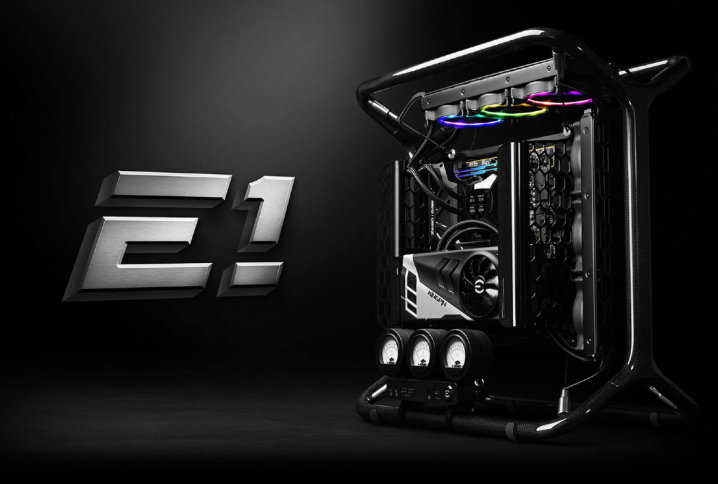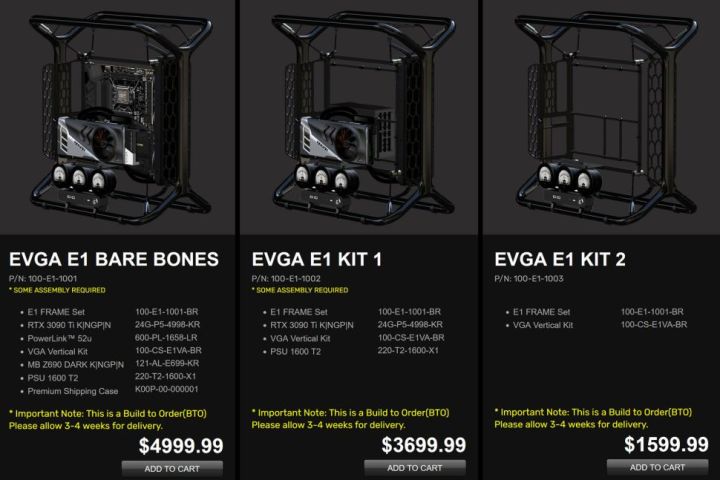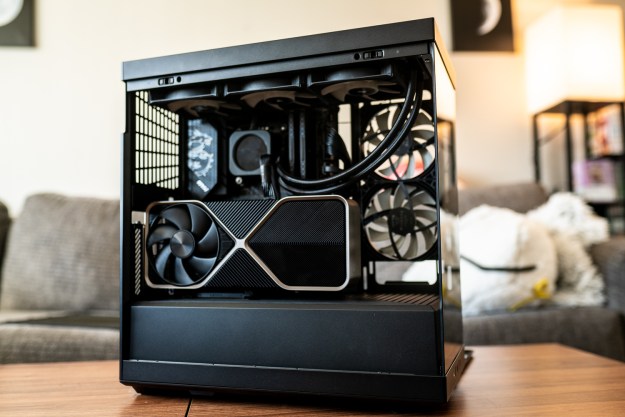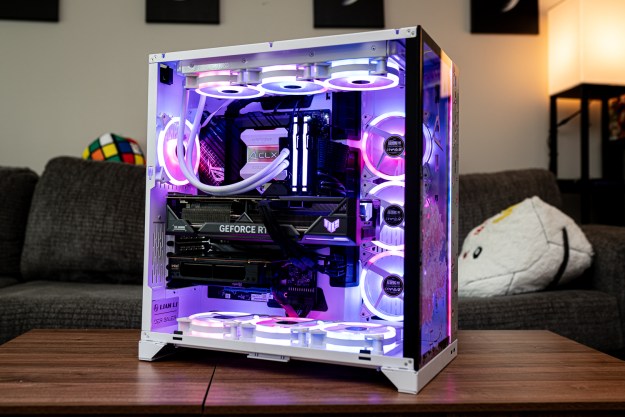The pricing tiers for EVGA’s E1 PC case, which features an open-air design, have been revealed and it’s going to cost a small fortune, to say the least.
After EVGA stressed that it wants to take “extreme gaming to the next level by setting a statement with our new gaming rig,” it shouldn’t come as too much of a surprise that the company is attaching a premium price point for the E1.

As reported by Tom’s Hardware, the cheapest option costs $1,600, which comes with the E1 frame set alongside the VGA vertical kit.
Still, why is something as basic as a PC case costing more than even the most premium graphics cards on the market?
The answer lies in the materials used for the E1 itself. The entire frame is made out of 100% 3K carbon fiber, which is something generally reserved for supercars, costly bicycles, and the like. As a result, the weight of the case amounts to just 2.76 pounds.
In addition to the carbon fiber structure, the E1 sports three analog gauges that showcase the temperature of the GPU and CPU. The case also sports the “lightest frame design compared to other chassis of the same volume,” according to EVGA, which is complemented by a suspension system of steel cables — this essentially results in the motherboard being suspended in midair.
Elsewhere, the second most expensive EVGA E1 PC case configuration will set you back a staggering $3,700. This particular kit comes with an Nvidia RTX 3090 Ti Kingpin GPU, as well as a PSU 1600 T2.

The priciest option out of all three kits, the EVGA E1 Bare Bones, comes with the aforementioned components, as well as a Z690 Dark Kingpin motherboard, a PowerLink 52u, and a premium shipping case (which would otherwise cost $800). The asking price? $5,000.
And don’t forget, as aptly highlighted by Tom’s Hardware, you will need to sort out a CPU, memory, and storage solutions on your own dime, adding to the $5,000 figure by at least another few hundred dollars.
Each of the three PC case kits can be purchased and ordered today. However, they all require a waiting time of 3-4 weeks for customers to receive their order due to their build-to-order status.
If you’re willing to pay an amount that could essentially cover a used car, then you’ll also receive dual USB 3.0 ports, a USB Type-C port, a headphone jack, and a microphone jack. These features are joined by a 7th-gen closed loop cooler sporting an LCD screen, as well as a limited-edition keychain.
While the cost of the case may seem excessive for many, the appearance of such premium PC cases has become far more common in the market recently. For example, the Regner PC chassis that offers two entire cooling radiators situated within the side panels costs nearly $2,000.
Editors' Recommendations
- OneDrive is ruining my PC gaming setup
- 5 ways to take your PC from boring to beautiful
- I made an entire PC build for the price of one Nvidia GPU
- As a pro PC builder, here are 5 building tips no one tells you
- It’s time to stop ignoring your motherboard when building a PC





